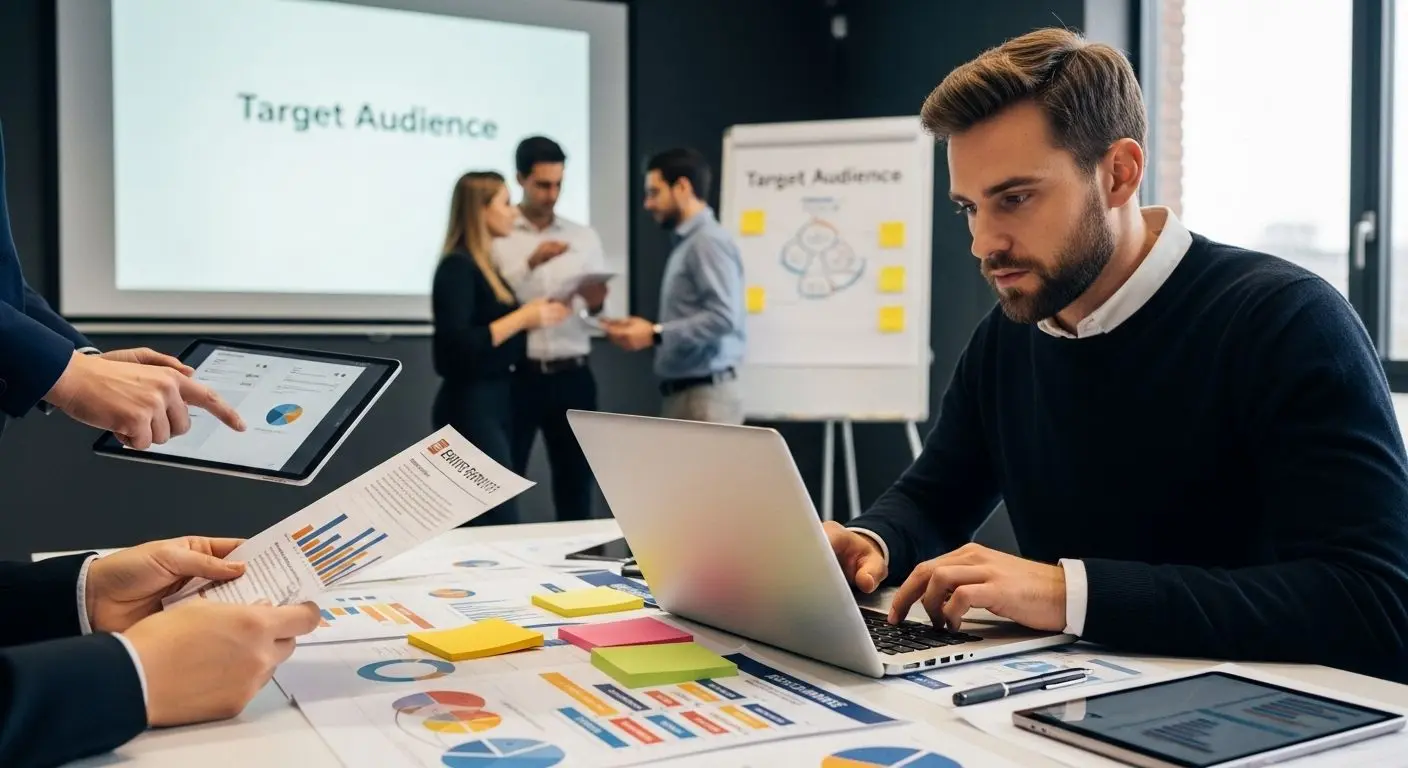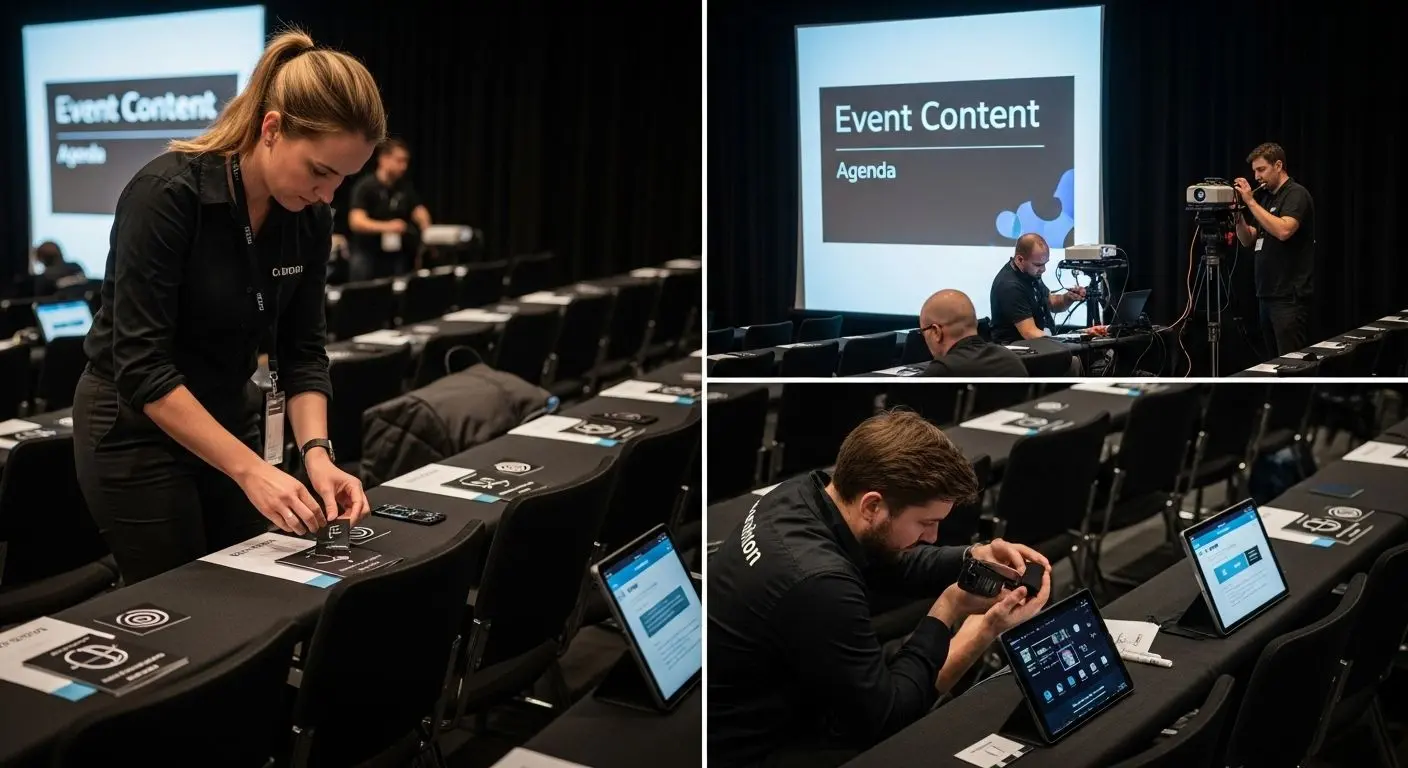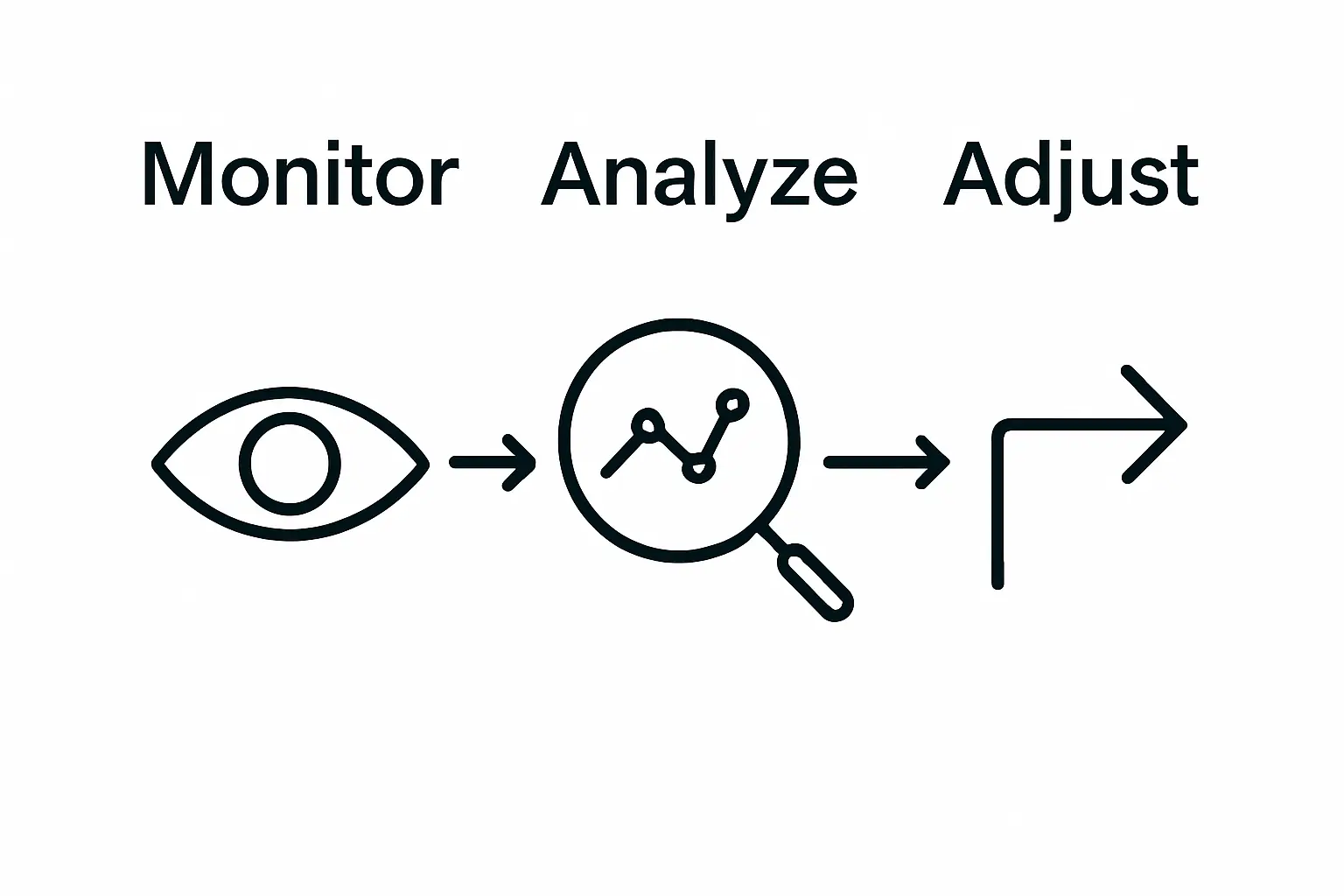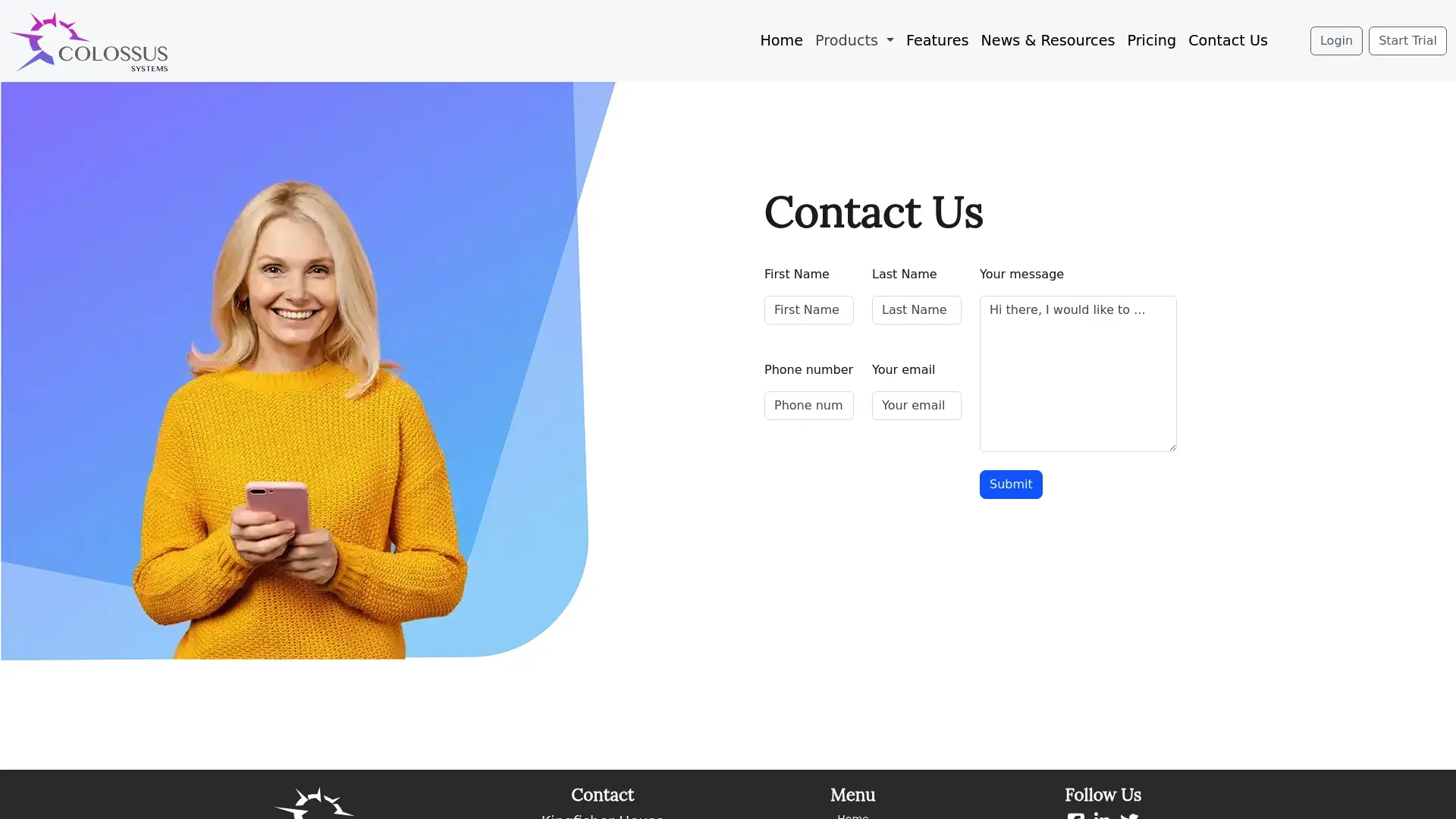How to Increase Event Attendance: Proven Strategies that Work

Event attendance is a metric every organiser watches closely and yet almost one in three planned attendees never show up. That sounds discouraging in a world where professional development and networking matter more than ever. Yet the surprising truth is that mastering a few simple steps can turn those no-shows into a packed crowd and create experiences your audience will remember.
Table of Contents
- Step 1: Analyse Your Target Audience And Their Needs
- Step 2: Develop Compelling Event Content And Format
- Step 3: Create A Comprehensive Marketing Plan
- Step 4: Utilise Effective Communication Channels
- Step 5: Monitor Engagement And Adjust Tactics
- Step 6: Evaluate Attendance And Gather Feedback
Quick Summary
| Key Point | Explanation |
|---|---|
| 1. Identify target audience needs | Understand key demographic and psychographic factors that influence attendance and engagement with your event. |
| 2. Create compelling event content | Align your event agenda with attendees’ professional aspirations for maximum relevance and impact. |
| 3. Develop a strategic marketing plan | Establish a multi-channel marketing strategy that clearly communicates the event’s unique value to attract attendees. |
| 4. Monitor engagement metrics closely | Analyse registration and interaction data to adjust marketing tactics in real-time for better results. |
| 5. Gather and evaluate feedback post-event | Use surveys and interviews to extract insights for continuous improvement of future events and attendee experiences. |
Step 1: Analyse Your Target Audience and Their Needs
Understanding your target audience is the foundational step in increasing event attendance. Without a clear picture of who you want to attract, your event marketing efforts will be scattered and ineffective. The goal of this initial stage is to develop a comprehensive profile of potential attendees that will guide every subsequent strategic decision.
To begin your audience analysis, start by gathering demographic and psychographic information. Demographic data includes age, professional background, income level, and geographical location. Psychographic insights delve deeper, exploring motivations, interests, professional challenges, and personal aspirations. Consider conducting surveys, reviewing past event attendee data, and examining industry networking platforms to compile this information.
Your research should aim to answer critical questions: What drives your potential attendees to participate in events? What are their primary professional development needs? What obstacles might prevent them from attending? By understanding these nuanced details, you can craft targeted messaging and event experiences that resonate directly with their expectations.
Utilize both quantitative and qualitative research methods. Professional networks, social media platforms, and our guide on effective community engagement tactics can provide valuable insights into audience preferences. Conduct structured interviews with a sample of your target demographic, analyse engagement metrics from previous events, and create detailed audience personas that represent different segments of your potential attendee pool.
Successful audience analysis requires continuous refinement. Track and update your understanding regularly, recognizing that professional interests and needs evolve. The more precisely you can define and understand your target audience, the more effectively you can design events that attract and retain their participation.
Below is a checklist table summarising the key verification steps for audience analysis completion as described in Step 1.
| Verification Step | Description | Status (Tick when Complete) |
|---|---|---|
| Demographic profile created | Gathered key metrics such as age, profession, income | |
| Psychographic insights documented | Identified motivations, interests, aspirations | |
| Motivational factors identified | Determined main drivers for attending events | |
| Attendance barriers mapped | Identified obstacles that may prevent attendance | |
| Audience personas developed | Created profiles to represent target audience segments |
Verification checklist for audience analysis completion:
- Detailed demographic profile created
- Psychographic insights documented
- Key motivational factors identified
- Potential attendance barriers mapped
- Preliminary audience personas developed
Step 2: Develop Compelling Event Content and Format
Crafting an exceptional event experience requires more than just assembling speakers and topics. Your event content and format must resonate deeply with your target audience’s professional aspirations and learning objectives. This step transforms your event from a simple gathering into an unmissable opportunity for growth and connection.
Begin by mapping your content directly to the specific needs and challenges identified during your audience analysis. Professional attendees seek tangible value that advances their careers or solves immediate workplace problems. Design your event agenda to provide clear, actionable insights that attendees cannot easily obtain through online resources. This means curating speakers who bring unique perspectives, practical case studies, and innovative solutions that challenge conventional thinking.
Consider diversifying your event format to accommodate different learning styles and engagement preferences. Hybrid event models have become increasingly popular, allowing participants to join either in-person or virtually. Learn more about creating successful hybrid event experiences to maximize your reach and accessibility. Incorporate interactive elements such as live Q&A sessions, collaborative workshops, networking opportunities, and real-time polling to maintain audience engagement and create memorable experiences.
Your event content should follow a strategic narrative arc that builds excitement and delivers progressive learning. Start with foundational concepts, gradually introducing more complex ideas and culminating in transformative insights.
This table provides a quick reference to help you compare different event content and format options discussed in Step 2.
| Format Type | Engagement Approach | Ideal For |
|---|---|---|
| In-person | Direct networking, workshops | Traditional audiences, local groups |
| Virtual | Webinars, live Q&A | Remote learners, wider reach |
| Hybrid | Combines both above | Maximum accessibility |
| Interactive Sessions | Polls, real-time discussions | Enhanced participant engagement |
| Speaker Presentations | Expert insight, inspiration | Sharing industry knowledge |

Verification checklist for event content development:
- Content aligned with audience professional needs
- Diverse and interactive presentation formats planned
- Clear learning objectives for each session
- Balanced mix of theoretical and practical knowledge
- Potential networking and interaction opportunities identified
Step 3: Create a Comprehensive Marketing Plan
A comprehensive marketing plan transforms your event from a mere concept into an anticipated experience that attracts and excites potential attendees. Strategic marketing is the bridge between your meticulously developed content and your target audience’s awareness and interest. Your goal is to create a multi-channel approach that generates excitement, communicates value, and drives registrations.
Begin by establishing a clear marketing timeline that starts well in advance of your event. Typically, event promotion should commence 8-12 weeks before the date, with increasing frequency and intensity as the event approaches. Develop a consistent messaging framework that highlights the unique value proposition of your event, focusing on the transformative experiences and professional opportunities attendees will gain.
Leverage multiple communication channels to maximise your reach. Email marketing remains a powerful tool, with targeted campaigns that segment your audience based on their professional interests and previous engagement. Learn more about segmenting email lists for precise targeting to ensure your messages resonate with specific audience groups. Complement email efforts with strategic social media campaigns, creating shareable content that includes event highlights, speaker previews, and testimonials from previous participants.
Consider implementing a referral programme that incentivises current registrants to promote the event within their professional networks. Personal recommendations carry significant weight in professional circles and can dramatically expand your potential attendee pool. Develop compelling visual assets such as event trailers, speaker highlight reels, and infographics that can be easily shared across digital platforms.
Verification checklist for marketing plan development:
- Comprehensive marketing timeline created
- Multi-channel promotion strategy outlined
- Unique event value proposition defined
- Targeted communication channels identified
- Promotional content and assets developed
Step 4: Utilise Effective Communication Channels
Effective communication channels are the lifeline of event marketing, transforming your event from a concept into an anticipated experience. Your communication strategy must be a carefully orchestrated symphony of targeted messages across multiple platforms, designed to capture attention, build excitement, and drive registration.
Professional events demand a sophisticated, multi-channel communication approach. Start by creating a communication hierarchy that prioritizes platforms based on your target audience’s preferences. LinkedIn remains a powerhouse for professional networking, making it an ideal primary channel for business and industry events. Complement this with targeted email campaigns that provide deeper, more personalised information. Learn more about developing strategic event registration approaches to enhance your communication effectiveness.
Dynamic content is crucial in maintaining audience engagement. Develop a content calendar that introduces event speakers, shares exclusive insights, and provides glimpses into the event experience. Short video teasers, speaker interview snippets, and behind-the-scenes preparation content can generate significant buzz. Utilise social media platforms to create interactive experiences, such as live Q&A sessions with keynote speakers or polls that invite potential attendees to influence event content.
Consider implementing a communication cascade that builds momentum. Begin with broad awareness campaigns, gradually transitioning to more detailed, personalised communications as the event date approaches. Integrate automated messaging systems that can send targeted reminders, updates, and additional event information. Ensure your communication remains consistent in tone and messaging across all channels, creating a cohesive narrative that reinforces the event’s value proposition.
Verification checklist for communication channel strategy:
- Multi-platform communication strategy developed
- Content calendar created with diverse engagement tactics
- Personalised messaging approach established
- Interactive communication elements planned
- Consistent messaging across all channels confirmed
Step 5: Monitor Engagement and Adjust Tactics
Monitoring engagement is not just about collecting data. It is about transforming raw information into strategic insights that dynamically improve your event marketing approach. Successful event organisers understand that flexibility and real-time responsiveness are crucial in driving attendance and creating compelling experiences.
Establish a comprehensive analytics framework that tracks multiple engagement metrics across different channels. This includes monitoring registration rates, email open rates, social media interactions, website traffic, and early bird ticket sales. Pay close attention to conversion rates at each stage of your marketing funnel, identifying potential drop-off points that might indicate messaging or communication gaps. Explore our guide on effective event registration strategies to understand how precise tracking can enhance your event marketing effectiveness.
Implement a systematic approach to data interpretation. Set up weekly or bi-weekly review sessions where you analyse collected metrics against your initial event marketing objectives. Look for patterns in audience behaviour, such as which communication channels generate the most interest, what type of content drives registrations, and at what point potential attendees might lose interest. This granular understanding allows you to make targeted adjustments to your marketing strategy, messaging, and event positioning.
Remain agile in your approach. If early analytics suggest certain marketing channels are underperforming, be prepared to reallocate resources quickly. This might mean shifting budget from low-performing platforms to those showing higher engagement, adjusting your messaging to address identified audience concerns, or introducing additional incentives to boost registration rates. The key is to view your marketing strategy as a living document that evolves with real-time insights.

Verification checklist for engagement monitoring:
- Comprehensive analytics tracking system established
- Regular performance review sessions scheduled
- Metrics aligned with original event marketing objectives
- Flexible adjustment mechanisms developed
- Multiple communication channel performance evaluated
Step 6: Evaluate Attendance and Gather Feedback
Feedback and attendance evaluation are not mere administrative tasks but critical strategic processes that transform your current event into a blueprint for future success. Comprehensive evaluation provides the insights necessary to continuously improve your event marketing and delivery strategies, creating a cycle of perpetual enhancement.
Design a multi-layered feedback mechanism that captures nuanced perspectives from different participant segments. Immediately after the event, deploy a digital survey that allows attendees to rate their experience across various dimensions such as content quality, speaker expertise, networking opportunities, and overall event organisation. Explore our comprehensive guide on hosting effective virtual conferences to understand sophisticated feedback collection techniques.
Move beyond quantitative metrics by incorporating qualitative feedback channels. Implement post-event focus groups or one-on-one interviews with a representative sample of attendees. These deeper conversations can reveal subtle insights that standard surveys might miss. Pay special attention to understanding why some registered participants did not attend, as these insights are crucial for addressing potential barriers in future events. Analyse not just the feedback received, but also the response rate and demographic distribution of your respondents to ensure a comprehensive understanding.
Create a structured feedback review process where insights are systematically documented and translated into actionable strategies. Develop a feedback analysis report that categorises insights into immediate improvements, medium-term strategic adjustments, and long-term event design considerations. This approach ensures that each event becomes a learning opportunity, incrementally refining your ability to attract and engage your target audience.
Verification checklist for attendance evaluation:
- Comprehensive digital survey developed
- Qualitative feedback mechanisms established
- Detailed analysis framework created
- Insights categorisation process defined
- Actionable improvement strategies outlined
Transform Your Event Attendance With Smarter Engagement
Bringing more people to your events is never just about sending out a few reminders. If you are struggling to identify your target audience or wondering how to create truly compelling content and streamline the registration process, you are not alone. Lack of actionable data, scattered communication channels and complex event logistics can discourage even the most dedicated membership organisations from achieving strong attendance. Colossus Systems understands these barriers. Our unified platform empowers you to translate the proven strategies highlighted in this article—such as in-depth audience analysis, interactive event formats, and multi-channel marketing—into seamless, repeatable actions that boost turnout and deepen engagement.

Ready to make every step of your event journey easier and more effective? Discover how you can bring your marketing, registration and analytics together in one place by reaching out to our team today. Find out how our platform removes attendance barriers for membership organisations and lets you scale your professional gatherings with confidence. Visit Colossus Systems to take your next event to the next level right now. Take a closer look at our hybrid event engagement solutions and see how strategic community engagement tactics can help you connect with exactly the right audience.
Frequently Asked Questions
How can I analyse my target audience to increase event attendance?
Understanding your target audience requires gathering demographic and psychographic information, such as age, professional background, interests, and motivations. Conduct surveys and utilize data from past events to develop detailed audience profiles.
What types of content and formats can make my event more appealing?
Event content should directly address the challenges and needs of attendees. Incorporating diverse formats, such as workshops, Q&A sessions, and hybrid models, can cater to different learning styles and keep the audience engaged.
How important is a marketing plan for event attendance?
A comprehensive marketing plan is crucial for generating awareness and excitement about your event. It should include a clear timeline, targeted messaging, and a multi-channel approach to effectively reach your potential attendees.
What metrics should I monitor to evaluate event engagement?
It’s essential to track metrics such as registration rates, email open rates, social media interactions, and website traffic. Regular analysis of these metrics will help you adapt your tactics to improve attendance and engagement.
Recommended
- Effective Event Registration Strategies for 2025 Success|CS
- Event Marketing Strategies for Membership Groups and Associations|CS
- Event Marketing Ideas for Membership Groups
- How to Host Webinars Effectively for Engagement
- How to Maximize Organic Reach for Your Business
- How do I schedule an assembly show? Next steps